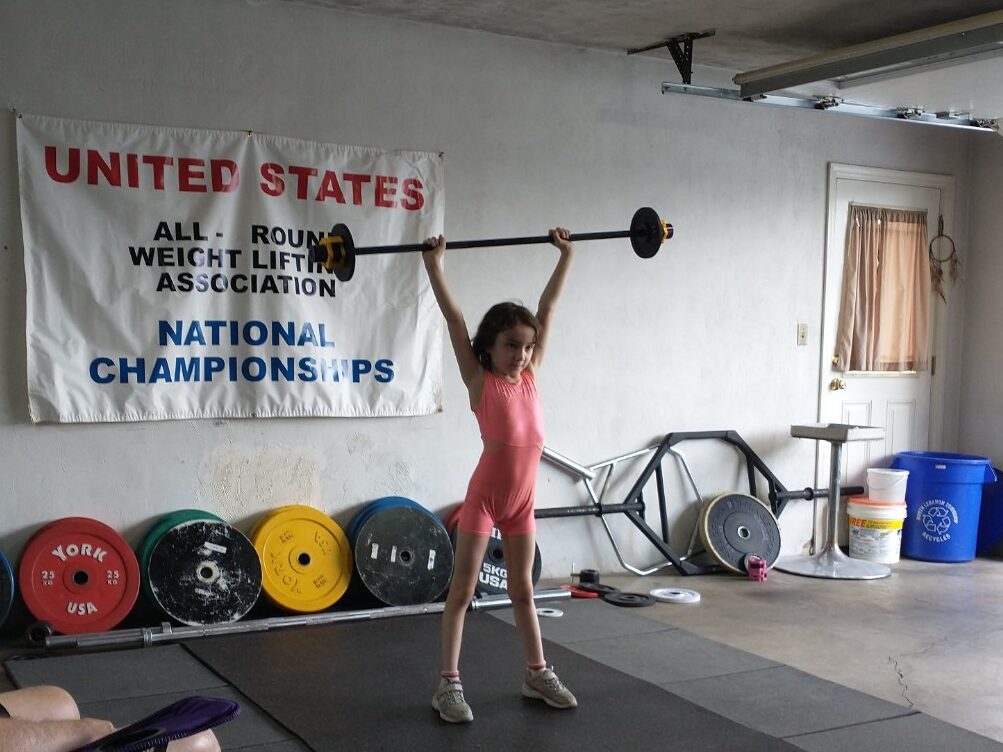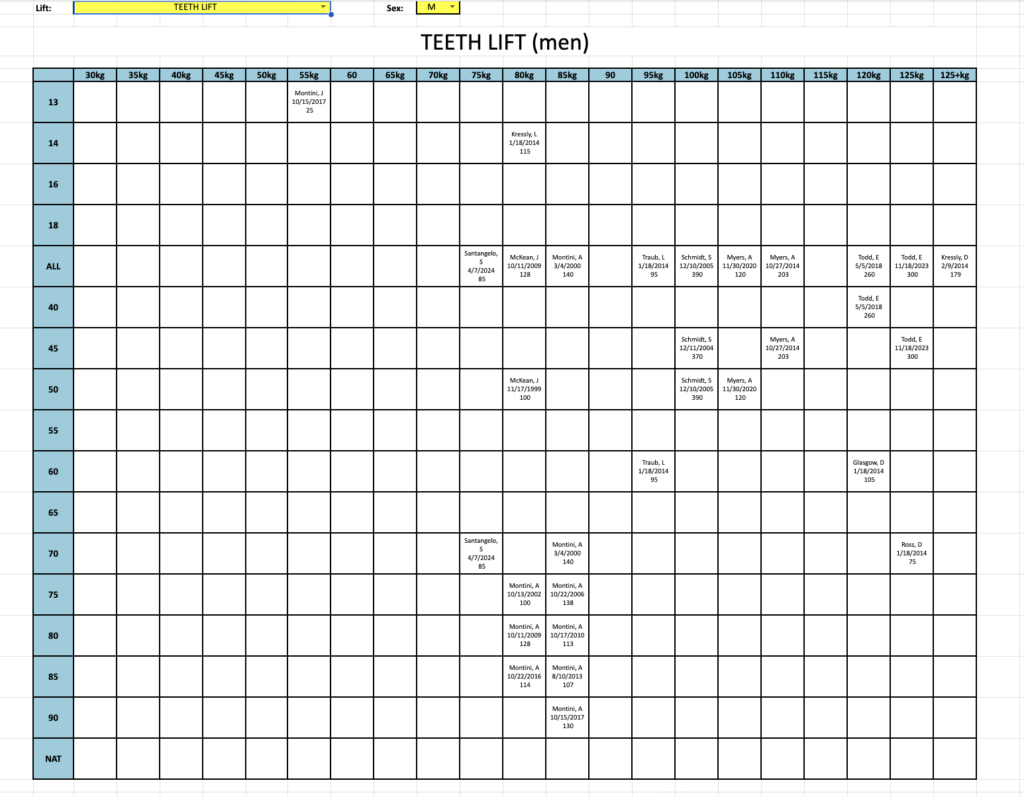What to wear at a USAWA meet
In this installment of the “USAWA 101” series, I’d like to talk about what we wear at competitions—our clothing and our equipment. If you’ve competed in weightlifting, powerlifting, or strongman, some of this may be familiar, but a few of our rules might be a bit different from what you’re used to.
The “lifting uniform”

You have two options for what to wear on your body. Either a singlet, or a shirt and shorts.
A singlet, if you’re not familiar, is a one-piece garment, usually form-fitting, that is shaped like shorts on the bottom, and continues up the torso, where it has straps that go over the shoulders. It looks like an old-timey swimsuit, or a wrestling outfit. In fact, if you need a cheap singlet quick, search for “wrestling singlet.” You can get one off Amazon for under $20. (The nice ones, from a company like Virus or SBD, cost more and may fit better. But they’re the same basic thing.) You may wear a shirt under your singlet if you like, but it’s not required.
Your other option is to wear a shirt and shorts. The shirt can be a T-shirt or a tank top. (We used to have a rule forbidding tank tops, but that was repealed at the 2024 national meeting.)
Whether it’s one piece or two, your lifting uniform must leave your knees and elbows exposed. That means no long sleeves, and no leggings under the singlet.
If you’re thinking “Can I wear ANYTHING that complies with these rules?” the answer is almost yes. There is a rule that states:
Lifting attire which contains inappropriate language or images, is too revealing, sloppy in appearance, or deemed otherwise inappropriate by the weigh-in official or Meet Director is a violation of the USAWA dress code.
I’ve never seen anyone get dress-coded for sloppy, revealing, or offensive clothing. But in theory, it could happen.
You must also wear “suitable” shoes. Most people wear sneakers of some sort, or weightlifting shoes. Deadlift slippers are also OK. You can’t lift barefoot, sorry.
Allowable equipment
Before we get into what you can’t use, I’ll just say what you can:
- A belt, any kind, up to 12 cm (4.75 inches) in width.
- Wrist wraps, not to exceed 1 meter in length. (They may be a maximum of 10 cm/4 inches wide, and 1 millimeter thick.)
- Dry chalk on your hands
On three specific lifts, knee sleeves or knee wraps may be worn, up to 2 meters in length. These lifts are the Front Squat, 12” Base Squat, and Anderson Squat. You may wear knee sleeves on these lifts instead, if you like. No other lifts allow knee wraps or sleeves.
What you cannot wear or use
I’m very sorry to anyone who is used to using these items, but they are not allowed:
- Wraps on any other part of the body (elbows, etc) except as mentioned above.
- Headgear such as hats or headbands, unless it is for religious purposes. (Your hijab or yarmulke is fine.)
- Gloves
- Straps
- Braces or supports, including knee and elbow sleeves (except as noted above for knee sleeves). If you have a doctor’s note stating that an item is medically necessary, the officials can make an exception.
- Over-the-knee socks
- Chalk or any substances on any part of the body other than the hands (no baby powder on the thighs)
- On the hands, any substances other than chalk. No tacky, rosin, chewing gum, etc.
- Tape, unless it’s covering an open wound or an injury (in which case it needs to be OK’d by the officials.) So, no, you cannot tape your thumbs for hook grip lifts.
Where to learn more
The full language of the rules about clothing and equipment is in the section of the Rulebook labeled VI. Equipment.
For any specific meet, if you want to know if your T-shirt is inappropriate or if your medically-necessary knee brace will be accepted, get in touch with the meet organizer and/or ask the head official.
For example, I recently refereed a meet where I was asked, ahead of time, whether a lifter would be able to use their doctor-prescribed compression stockings. My answer was yes. On the other hand, when I compete in USA Weightlifting events, I like to wear leggings and knee sleeves. But when I compete with USAWA I leave those items at home.
Ultimately we want everybody to be safe and healthy and have fun lifting more or less like the old-timers did.
A note on knee sleeves
The question of knee sleeves comes up from time to time—why doesn’t the USAWA allow them? The membership appears to be divided on the question, according to several votes and surveys over the years.
One side argues that knee sleeves don’t seem to give much if any mechanical advantage, and most strength sports allow them, so we should allow them too. On the other hand, some members see them as too modern for an organization that is trying to respect historical tradition, and the possibility that they may aid in lifting is enough reason to be cautious.
There was a lively debate on the topic at the 2024 National Meeting, and in the end knee sleeves remained banned (except for the three lifts that also allow knee wraps).
